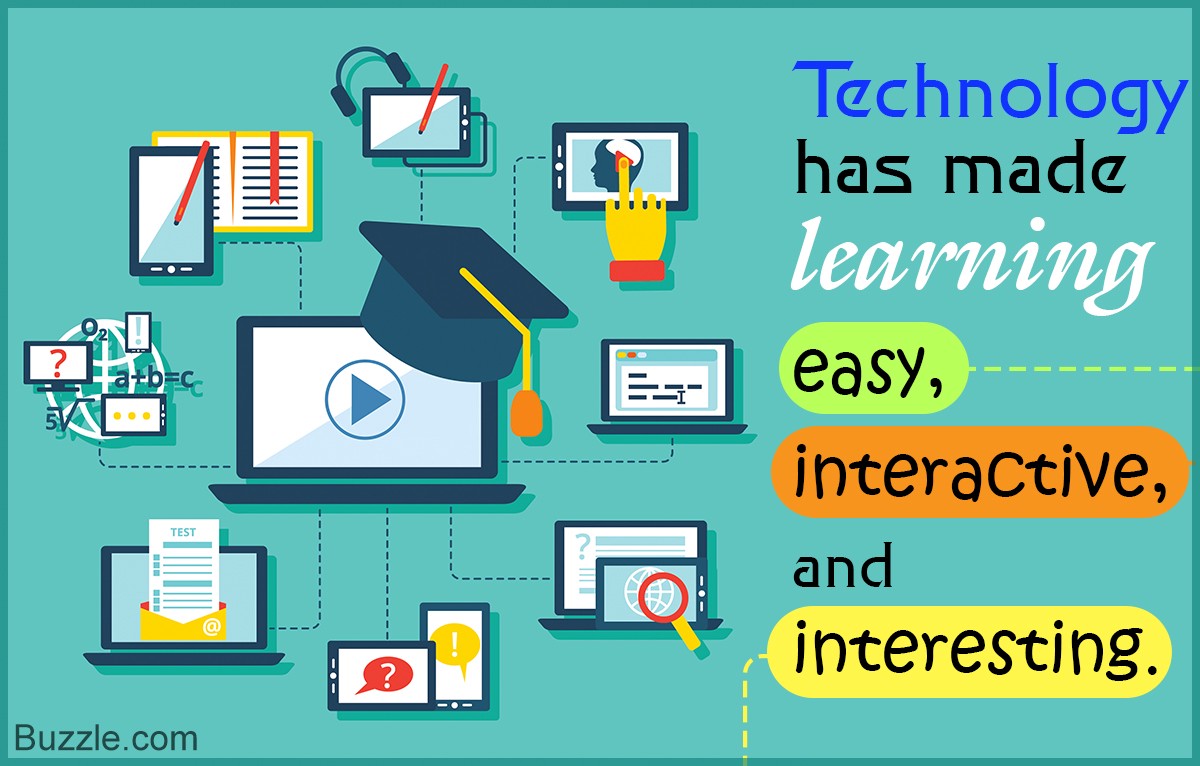The world is a great and convenient place to live in because of Technological Advancement. There is no denying how they make lives better and easier, especially in the fields of science, medicine, and education. But, like most things, TECHNOLOGY FOR EDUCATION also has its drawbacks. In fact, some of the more recent inventions are now being categorized as lazy aids, and are considered major contributors to obesity and a generally unhealthy population.
Can the same thing be said for technology used in the classroom? Tools, such as computers, mobile devices, and the internet, are now integrated into the educational system. While they are beneficial in certain academic aspects, they also have negative implications.
What are the List of the Advantages of Technology in Education Today?
1. Promotes independent learning in studentsThe internet is a treasure trove of information. Practically anything you need to know can be found online. Although there is a question of the credibility of the source and the data provided, it can still serve as an educational resource for students. Even without assistance from parents and teachers, students can just look up their lessons online.

2. Prepares students for the futureFrom the way technological advancements are going, it is obvious that the future will be digital and technology-focused. If students are well-versed on using technology to collaborate and communicate as early as now, they will not have trouble fitting in, competing and finding jobs in the future. Being familiar with using at least one form of technology at an early age will help them become comfortable using it, and eventually develop other skills necessary to handle other innovative devices and processes.
3. Has the potential to lower textbook and tuition pricesWith resources more accessible and in great abundance, the cost of textbooks is likely to decrease. It is also possible that students may no longer need to buy a textbook if it is converted into digital format. The actual books can stay in the classroom, while the content is saved on a student?s computer.

4. Allows teachers to create an exciting way to educate studentsGone are the days when the only tools for teaching are limited to books, a blackboard or whiteboard, and chalk or markers. With technology integrated into education, teachers can now incorporate images, videos, and other graphics when delivering lessons. Specific websites, apps, and programs will also enable teachers to vary how they provide instructions. This creates an exciting learning environment and promotes interest in education in general.
5. Encourages the development of new teaching methodsRather than spend an hour or so talking while the students listen, or have them read an entire chapter in silence, teachers and professors now have the option to use advanced teaching methods, such as podcasts, blogs, and social media. When working with a particular group or one-on-one, teachers can take advantage of web conferencing technologies other online communication tools.
Technology for education also presents universal tools that enable teachers to educate all types of students, including those who are struggling or have special needs. These include voice recognition, text-to-speech converter, translator, volume control, word prediction software, and other assistive technologies.
List of Disadvantages of Technology in Education

1. Results in a lack of interest in studyingBecause everything is now accessible online or through data saved in a computer or mobile devices, students are likely to develop poor studying habits and a lazy attitude towards education. Some of them may even think they can skip school because they can find answers and lessons online. Who needs teachers when you have internet and Google, right?
2. Makes students vulnerable to potential pitfallsWhile computers prove to be an invaluable educational tool, it can also be a source of problems. This is especially true for students who lack the skills needed to maximize a device?s functionalities. Technical problems and computer malfunctions can cause loss of assignments and other materials, resulting in high levels of stress that students would rather not experience. The difference in internet speeds and a device?s capabilities can also lead to certain difficulties that will de-motivate students. Add to this other thing that they will discover online, which are completely unrelated to school and education, and they will be distracted to no end.
3. Negative views on technologyConsumerism has taught us that technologies, from computers to mobile devices, are widely viewed as tools to entertain rather than educate. Textbooks, on the other hand, are seen as tools for learning. So, between a tablet and a textbook, students are likely to gravitate towards learning when reading a book, while they are likely to use a tablet to play games or spend time on social media.
4. Raise instructional challengesFor professors and teachers to stay abreast with the technology of education, they may need to be retrained. Those who have been teaching all their lives using traditional methods may not be very susceptible to the changes being applied. They may even see it as a threat to their job security and shun technology altogether. In fact, a majority of teachers believe that the constant use of digital technology is affecting a student?s attention span and his ability to persevere when a challenging task is thrown his way. Although such belief is subjective, scholars, experts, and teachers all agree that technology has changed the way students learn.

5. Can diminish the overall value of in-person educationAlthough research on online learning did not establish a direct link to how personal interaction affects a student?s performance, data gathered did show that those who enrolled in online courses have higher chances of failing, dropping out of classes, and are less likely to benefit from them. This may have something to do with the fact that lessons delivered online or through digital resources lack the face-to-face interaction between teacher and student that provides a more personal experience.

Conclusion
Integrating technology in education has its advantages and disadvantages, but the proper implementation might help keep the drawbacks to a minimum. Better planning is necessary.
-Ask2Use


